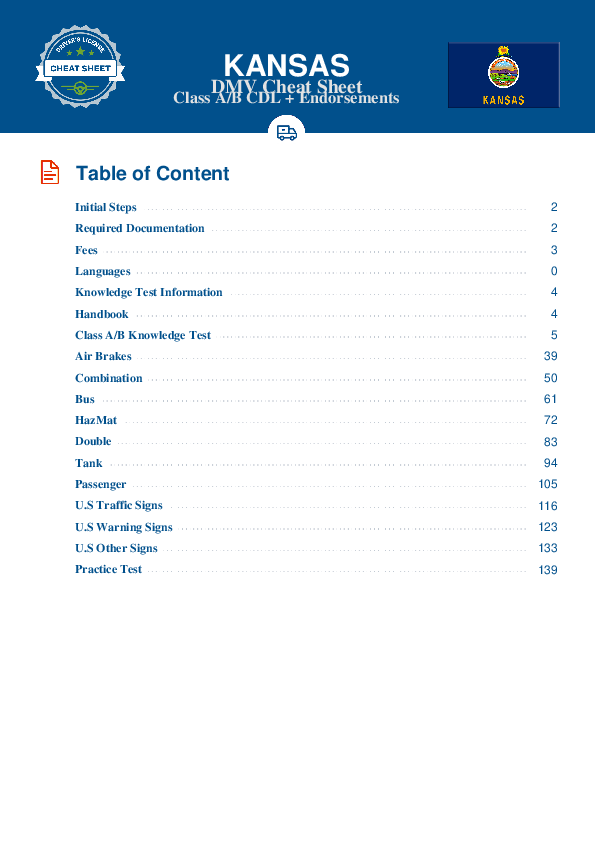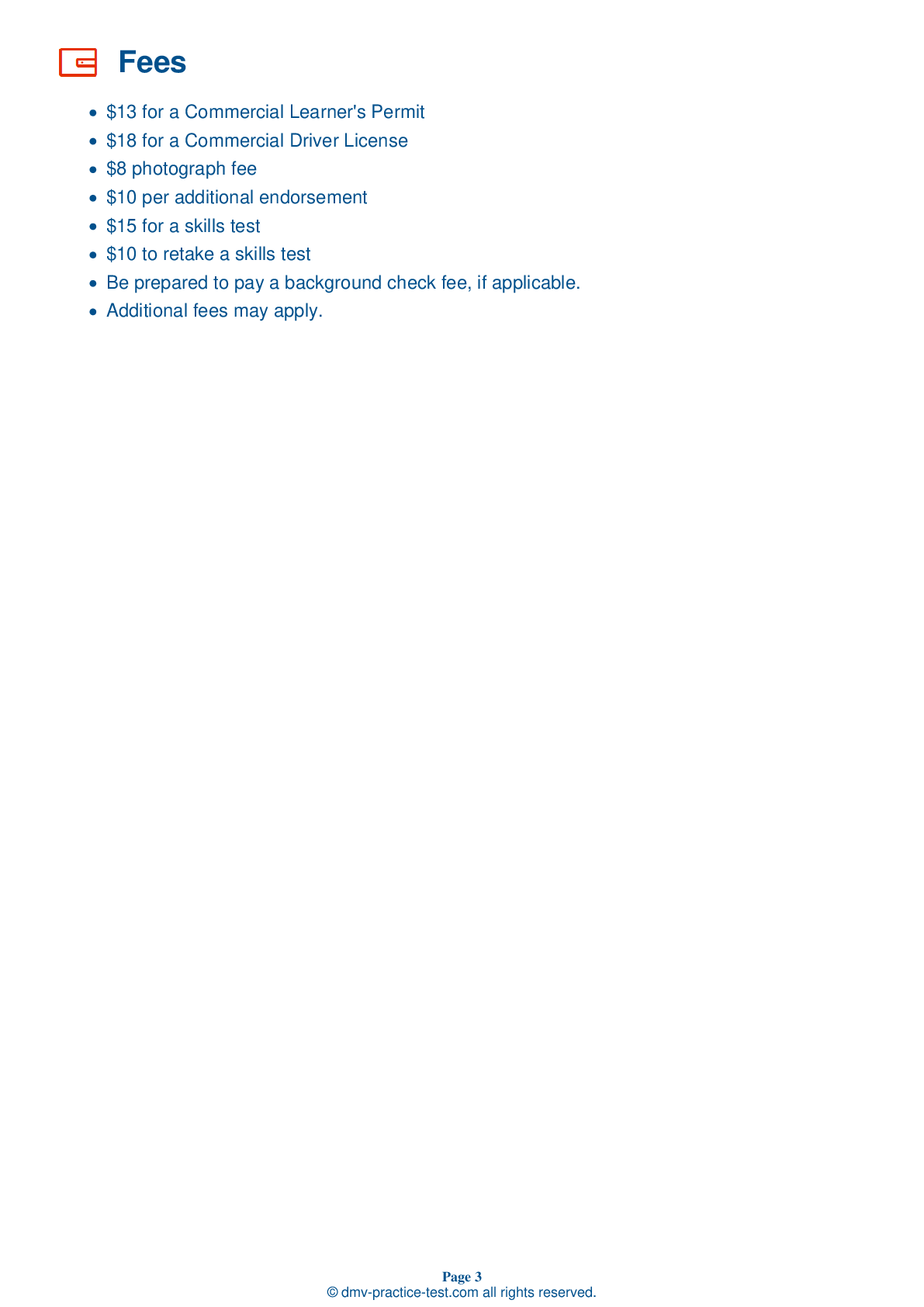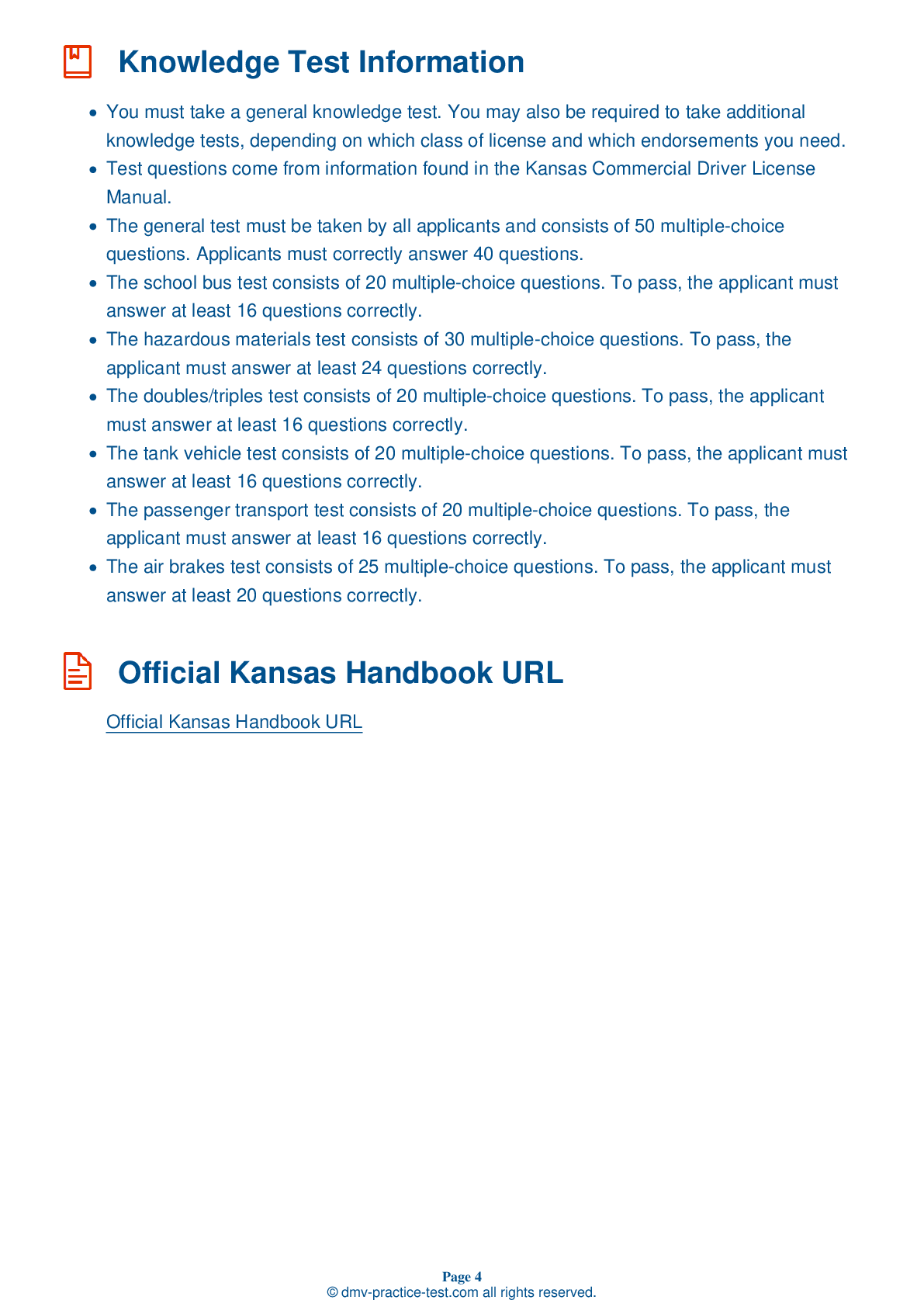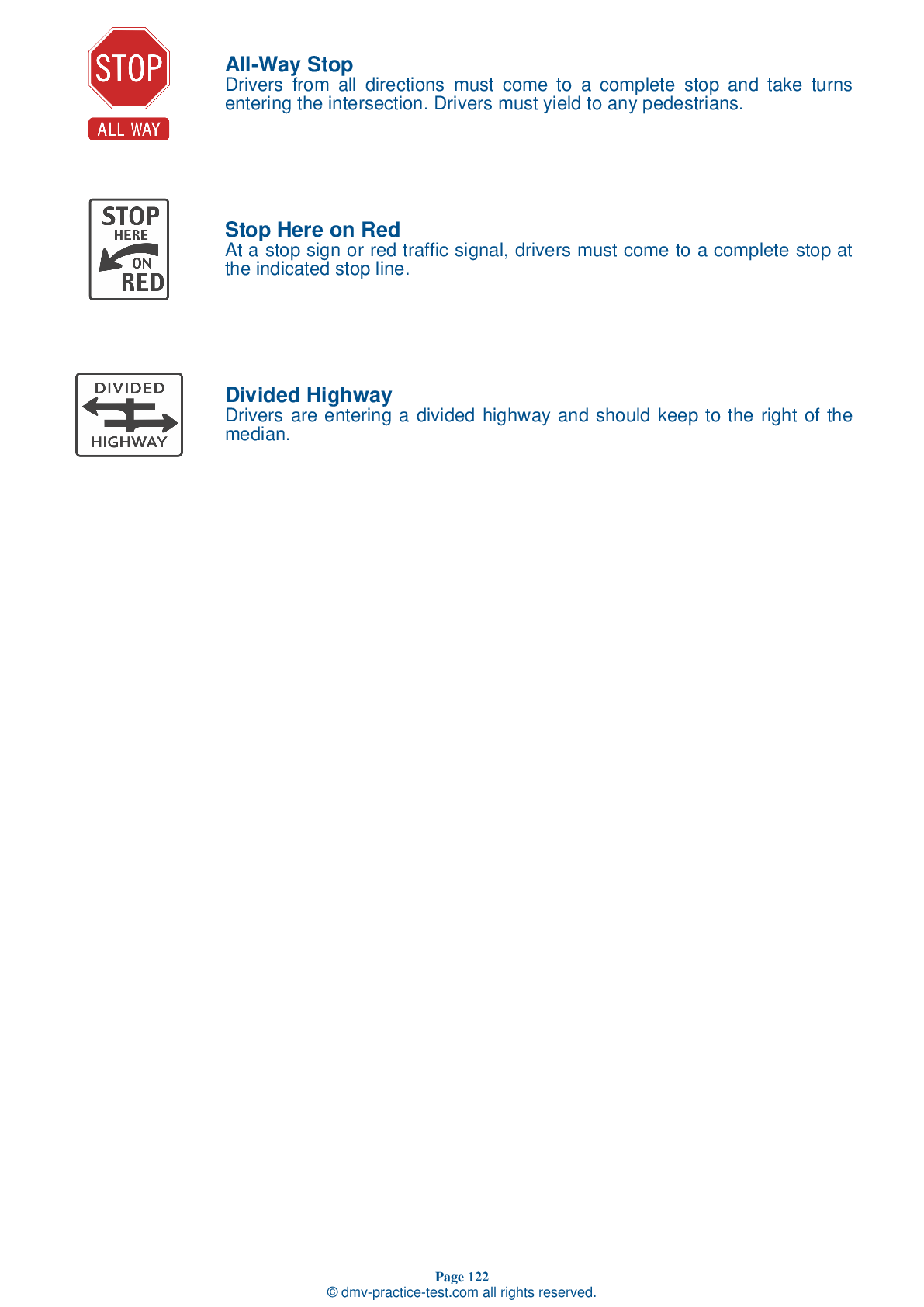Class A Driving Test | Kansas 2025 #2 Page 3 of 7
Train for FREE online with our Kansas class A license test. The official exam test consists of several obligatory parts, with all of them checking your knowledge of different blocks of road rules. If you need to obtain a KS CDL class A permit in 2025, practice as much as possible. Free sample tests published on our website will help you check and improve your knowledge and boost your grades. Please bear in mind that CDL class A requirements may vary from state to state.
15 . When asked about the vehicle's oil during the vehicle inspection test, you must be able to do all of the following, except:
During the vehicle inspection test, you must be able to indicate where the oil dipstick is located; show that the oil level is within a safe operating range; and show that the oil level is above the refill mark.
16 . Fuel records supporting IFTA quarterly fuel use tax returns must be kept by carriers for:
In general, if you operate a commercial vehicle in interstate commerce, it must be registered under the International Registration Plan (IRP) and International Fuel Tax Agreement (IFTA). These programs collect and distribute vehicle registration fees and fuel taxes based on what jurisdictions you drive in and for how long. Mileage and fuel records supporting IFTA quarterly fuel tax returns must be retained by carriers for four years.
17 . Driving in extremely hot weather:
In extremely hot weather, tire pressure can increase to dangerous levels due to the expansion of the air in heat. To keep an engine from overheating, it is important that there be enough oil and coolant in the engine compartment.
18 . Rough acceleration:
Accelerate smoothly and gradually. Rough acceleration can cause mechanical damage.
19 . What is a Gross Vehicle Weight Rating?
Gross Vehicle Weight Rating (GVWR) is the weight specified by the manufacturer as the maximum weight of a single vehicle and its load.
20 . Accelerating roughly is:
When accelerating, speed up smoothly and gradually so your vehicle does not jerk. Rough acceleration can cause mechanical damage.
21 . When driving in fog, you should:
If you must drive in fog, you should use your low beam headlights and fog lights, even during the day.
See the exact questions that will be on the 2025 Kansas DMV exam.
99.2% of people who use the cheat sheet pass the FIRST TIME
Lillian MCcranie explains how our CDL study guide was helpful in passing the exam and recommends it to everyone.
Cameron tells us how he purchased the CDL exam, and found it to be a useful tool which helped him pass the exam and find a job.



